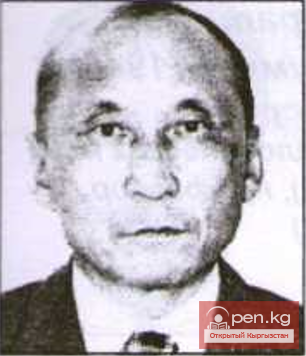
OSH - The textile industry of Kyrgyzstan continues to make progress, providing jobs and economic growth.
In October, the textile industry in the south celebrated several important events. Among them was the Day of Light Industry (October 25), which marks the sector's contribution to the economy. Additionally, more than 30 clothing, fabric, and carpet manufacturing enterprises participated in the textile industry fair from October 23-27, which attracted potential clients and investors.
“The main goal of the exhibition-fair ‘Legprom Osh-2014’ is to enhance the production capacity of the [southern] region, exchange experiences, and showcase the achievements of the textile and garment industry of Kyrgyzstan,” said Roza Sultanova, chairwoman of the southern regional council of the textile and light industry enterprises' trade union. “These achievements are a source of pride and a business card for the country.”
The textile industry has traditionally been one of the key players in Kyrgyzstan; nearly 7% of the country's working-age population is employed in this sector.
Officials acknowledge the sector's contribution to the economy.
“Thanks to this sector [light industry], thousands of jobs are created annually, the export potential of the country is growing, and products marked ‘Made in Kyrgyzstan’ are gaining new markets due to their quality and affordability, with demand for them increasing every year,” said President Almazbek Atambayev on October 25, 2013.
Recovery after a sharp decline
The light industry was neglected in the early years after gaining independence.
“The light industry of Kyrgyzstan has always been at the forefront since the Soviet era, when this sector accounted for 33% of the republic's GDP [at that time still Soviet],” said Saparbek Asanov, President of the ‘Legprom’ Association, “whereas now it is only 4.6%.”
However, recently the sector has been recovering.
“Our Association was established in 2004, when it included 25 enterprises,” he said. “Now there are already 750.”
“In the south of the country, our association is represented by 84 enterprises, 34 of which export their goods, positively impacting the economic growth and potential of the country,” said Asanov.
Support for southern enterprises
“Legprom” helps southern enterprises produce higher quality clothing by offering various forms of training, Asanov said. As a result, the investment climate in the south is improving, he added.
The work of the trade association helps promote business and find foreign investors and new clients, said Mavlyuda Jumabaeva, head of the ‘Couturier Hadji Akbarov’ firm.
“Our masters are always in search of new ideas to please their... clients,” she said.
The company, with 25 employees, is working to realize its ambitions. In January, it won a prestigious clothing design competition called ‘Fashion Industry’ in Bishkek. It has started receiving orders for fashionable clothing, including from abroad.
The recent decision to make school uniforms mandatory will also provide a strong boost for the four small enterprises that won the contract.
Stimulating business
Local authorities in the south are contributing to help by offering tax incentives and other stimuli.
“It is important for us to increase the number of light industry enterprises,” said Osh city vice-mayor Ilyich Ergyshev. “This creates new jobs and improves the tax base.”
More than 40 sewing enterprises, employing over 600 people, are located in Osh.
“Local enterprises produced goods worth a total of 39 million soms (about $700,000) in the first 9 months [of 2014], which they supplied not only to the domestic market but also to Belarus, Kazakhstan, and Tajikistan,” Ergyshev said.
This figure represents significant growth compared to the same period last year, when 32 sewing enterprises produced goods worth 30 million soms (about $550,000), he said.
International organizations are also willing to help.
“Our organization has been supporting Kyrgyz sewing enterprises for the fifth year,” said Indira Kadyrkanova, national coordinator of the trade development program of the International Trade Center. “We provide technical assistance, from production to sourcing fabrics and accessories, as well as consultations on design and marketing.”
Exhibitions and fairs, such as the one in Osh, are crucial for manufacturers, she said, adding that they must participate to reach new clients and establish contacts with foreign partners and investors.
2014-11-03















































